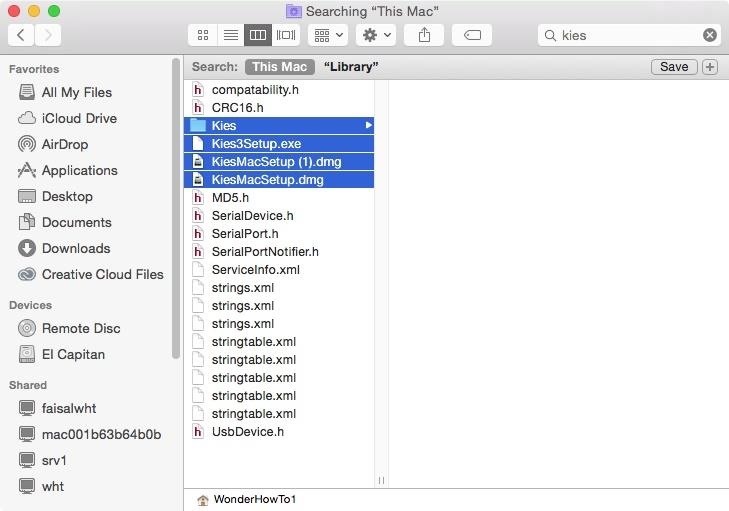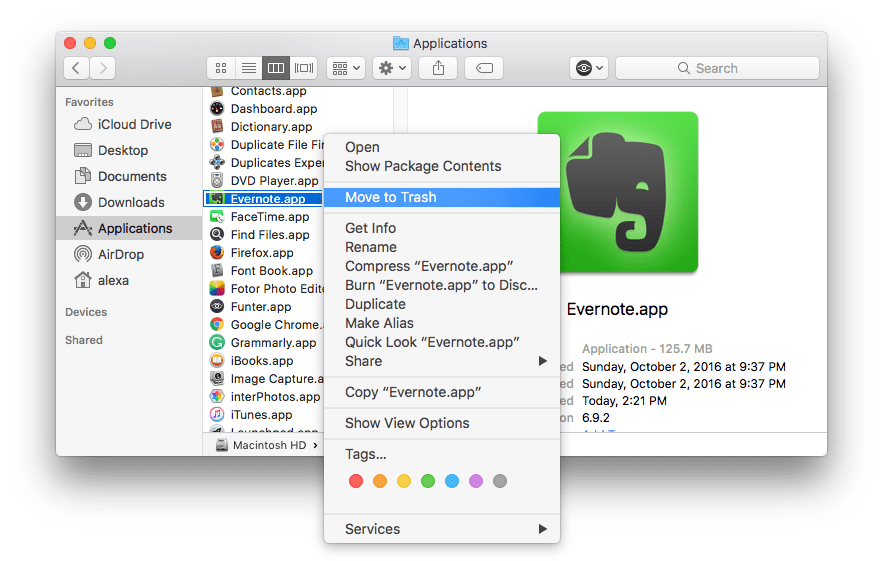Deleting Library Files On Mac
Summary: This post describes easy ways to remove / delete Mac leftover files. One of the best tools to remove Mac leftover files and other unwanted apps and large files from Mac is Stellar SpeedUp Mac.
The command line is not only powerful, it can also be dangerous. Learn how to use commands for deleting files and folders correctly to make sure your time with Terminal is a productivity godsend. For those applications AutoRecover files are stored in the folders we listed above. On the Word menu, click Preferences. Under Personal Settings, click File Locations. Under File locations, click AutoRecover files, and then click Modify. Find the location where you want to automatically save files. May 30, 2019 Despite the fact that Apple keeps the Mac Library folder hidden from users, it’s good to learn how to show the Library folder on Mac. You may need to access the Library folder when you need to clear cache, remove the app’s leftovers, edit preference files manually, etc. Oct 07, 2019 How to free up storage space on your Mac Save space by storing your content in iCloud or using built-in tools to find and remove large or unneeded files. Optimized Storage in macOS Sierra and later. can save space by storing your content in iCloud and making it available on demand. Jan 18, 2017 How to Add and Remove Kexts from macOS By Alexander Fox – Posted on Jan 18, 2017 Jan 17, 2017 in Mac Kexts, or kernel extensions, expand the basic functionality of macOS’s Darwin kernel.
Uninstalling programs and applications from a computer is quite common and rather straightforward. Both Windows and Mac have built-in utilities that help in uninstalling apps that are no longer used or required. However, often uninstallers leave behind traces of programs in the form of preference files, support documents, log files, etc. These files are created when their respective apps are in use but they’re not automatically removed from the system when you uninstall their apps. Collectively, such files are known as “application leftovers” and though they don’t harm the system in any way, such files do eat up disk space and eventually contribute in slowing it down.
When you free up Mac disk space to optimize system performance, removing or deleting such leftovers is also essential. Here are some ways by which you can easily delete Mac leftover files.
Getting rid of Mac leftover files
Applications on macOS are self-contained packages which can be uninstalled through a simple drag-and-drop operation to the Trash. Though this works for most programs, some applications include uninstallers within them which can be invoked by clicking on a ‘Customize’ button that appears during the install process. To find and remove Mac leftover files, follow the steps below:
- Go to the /Home/Library/Preferences/ folder, find leftover preference files of apps that you’ve already uninstalled, and delete them manually
- Go to the /Home/Library/Applications Support/ folder, find any folders and components of removed apps, and delete them. Delete leftover Application Support folders too.
- One by one, go to the /Library/StartupItems/ and /Home/Library/StartupItems/ folders, look for leftover startup items, and remove them.
- Go to System Preferences -> Accounts -> Login Items and find the item in the list for the application you want to remove. Then click on the “-” button to delete it from the list.
- One by one go to the /Library/LaunchAgents/ or /Library/LaunchDaemons/ or /Home/Library/LaunchAgents/ folders, look for leftover startup daemons or agents, and delete them.
- Go to the /Library/Receipts/ folder, find any files that have ‘.pkg’ extension, and delete them. These files are used by OS X to determine if certain apps are already installed.
- To find and remove any other leftover files, conduct a Finder search using the application name or the developer name as the search term. Delete any resultant files that you find.
Ways to Remove Mac Leftover Files
If the above manual method seem tedious, or you wish for more space from your hard drive, try the secure and reliable third-party Mac cleaner software Stellar SpeedUp Mac. This professional tool helps optimize macOS performance by assisting in deleting Mac leftover files, removing unwanted files, duplicates, and unused applications from MacintoshHD. The utility comes in handy when you need to sweep your Mac hard drive of all data that isn’t needed by the OS and frees up crucial disk space to help improve data access speed and overall system performance.
This is the same reason Apple has always hidden the folders containing OS X’s Unix underpinnings: /bin, /sbin, /usr, and the like.While I understand Apple’s motives here—I’ve had to troubleshoot more than a few Macs on which an inexperienced user has munged the contents of /Library—a user can have plenty of valid reasons for needing to access the personal Library folder. You just need to know how to make the folder visible again.Mavericks now offers a simple setting to make the /Library folder visible. Luckily, as I mentioned, the folder is merely hidden, using a special file attribute called the hidden flag. It’s just that, starting in Lion, and continuing in Mountain Lion, Mavericks, and Yosemite, Apple has made the folder invisible.The reason for this move is presumably that people unfamiliar with the inner workings of OS X often open /Library and start rooting around, moving and deleting files, only to later discover that programs don’t work right, application settings are gone, or—worse—data is missing. Mail library in mac. The setting you need to knowIf you’re still running Lion or Mountain Lion, making the /Library folder requires a little bit of work.
Steps to remove leftovers from Mac hard drive using Stellar Speedup Mac tool

Step1: Launch the Stellar Speedup Mac software interface and click on the “Rocket” button as shown below.
Step2: Now choose the appropriate scan option between “Recommended” and “Custom” Scan. Click on the ‘StartScan’ button to initiate the Mac drive scanning process.
Step3: The Stellar Speedup Mac software will display the total amount of hard drive space occupied by leftover files.
Step4: Finally, click on the “Speedup Now” button to remove all the junk and other leftover files from Mac drive.
Below are the salient features of the software:
- Removes Logs, Trash, Leftovers, junk files, and manages extensions from your Mac for free
- Speeds up both the boot volume as well as other volumes
- Uninstalls unwanted applications through simple ‘Drag and Drop’ operation
- Removes duplicate files from iTunes, iPhoto, iMovies, iWork, and Aperture
- Allows preview of files before removing them from the system
- Provides option to schedule automatic Mac cleaning
- Facilitates setting filters to find and remove specific file types
- Helps clean Mac removable devices

With the above features, removing unwanted files from your Mac becomes seamless.
The Bottom Line
Getting rid of Mac leftover files is essential if you wish to have ample free space on your hard drive and Stellar SpeedUp Mac serves the purpose.
Summary: This blog shares reliable methods for recovering permanently deleted log files, caches, and library files from Mac start-up disk. Step 3: You can choose to Sync your entire music library or only selected playlists, artists, albums, and genres from iTunes library to your iPhone. Click Done Apply and it will start syncing music from iTunes to your iPhone. Feb 13, 2020 Use iTunes to sync your iPhone, iPad, or iPod with your computer Learn how to sync music, movies, and more using iTunes on your Mac or PC. If you're using macOS Mojave or earlier or a Windows PC, use iTunes to sync content to your devices. Sync itunes library from mac to iphone. Jan 16, 2020 To turn on iCloud Music Library: Open iTunes. From the menu bar at the top of your screen, choose Edit Preferences. Go to the General tab and select iCloud Music Library to turn it on. If you don't subscribe to Apple Music or iTunes Match, you won’t see an option to turn on iCloud Music Library. It outlines two approaches for recovering deleted library and logs as follows:
|
Most websites use cookies and create temporary caches on your Mac when you browse the Internet. While this helps improve your online experience by quickly loading images and data every time you visit the site again, it creates files on your hard drive that can eat up space unnecessarily. Over time, not only does it slow down the performance of your web browser but also of your whole Mac. Thus, experts suggest that clearing system caches and browser cookies can help improve browser and Mac performance significantly.
All of this sounds quite straightforward, but in reality, it requires caution. When trying to manually delete cache and other log files that aren’t required by the Mac, many users inadvertently delete system files that are needed by other applications. As a result, some system apps can start behaving unexpectedly. In such a scenario you either need to uninstall and reinstall those apps or reformat your Mac. Alternatively, if you can recover deleted log files and caches, the problem can be solved.
Delete Library Folder Mac
Let us have a look at some of the simplest ways to recover deleted macOS caches, log files, and Library folders.
Recover deleted system files manually
From the Trash folder
Om macOS, when you select files and press the ‘Delete’ button, they’re moved to the Trash folder. If that’s how you’ve deleted caches and log files, recovering them through the below steps—
- Open the ‘Trash’ folder by double-clicking on the trash can icon on the desktop
- Locate the files you wish to recover
- Right-click on the files
- Select ‘Put Back’
- If the original location of the files no longer exists, drag the files to the desktop and then move them to any other desired folder
From Time Machine Backup
Most macOS users rely on Time Machine to take regular backups of all data on their hard drives. If you’ve permanently deleted cache files through ‘Command + Shift + Option + Delete’ operation, your latest Time Machine backup is where you can get them back from. Follow the below steps—
- Connect your Time Machine backup drive to your Mac
- Select the backup that you wish to restore
- Click on ‘Restore’
Recover macOS caches folder, log files, Library folders automatically
If your data has been permanently deleted and you don’t have a backup from which you can recover it, the most reliable option to restore them is to opt for the secure and reliableMac Data Recovery software. Backed by powerful scanning algorithms, this competent software scans your entire Mac hard drive to search for recoverable data and performs safe and accurate recovery. With it, you can easily recover deleted Library folders, macOS cache folders, log files, and other documents, photos, music files, or videos that have been deleted from APFS, HFS, HFS+, FAT, ex-FAT and NTFS format based file systems.
When the recovery process completes, you should be able to view all deleted caches, log and library files accurately recovered on your macOS.
Conclusion
Force Delete Files On Mac
Almost all deleted data can be recovered safely if you exercise caution and act quickly. Keep the above methods in mind as they will aid you considerably; and if all else fails, then leverage the secure and reliable Stellar Data Recovery for Mac software.